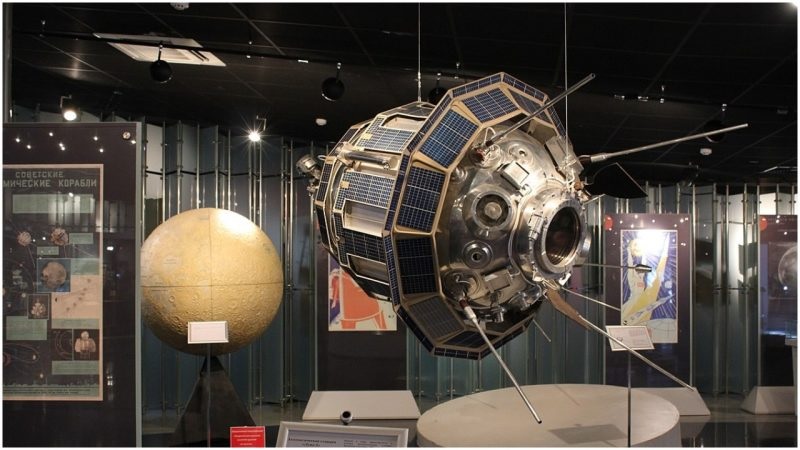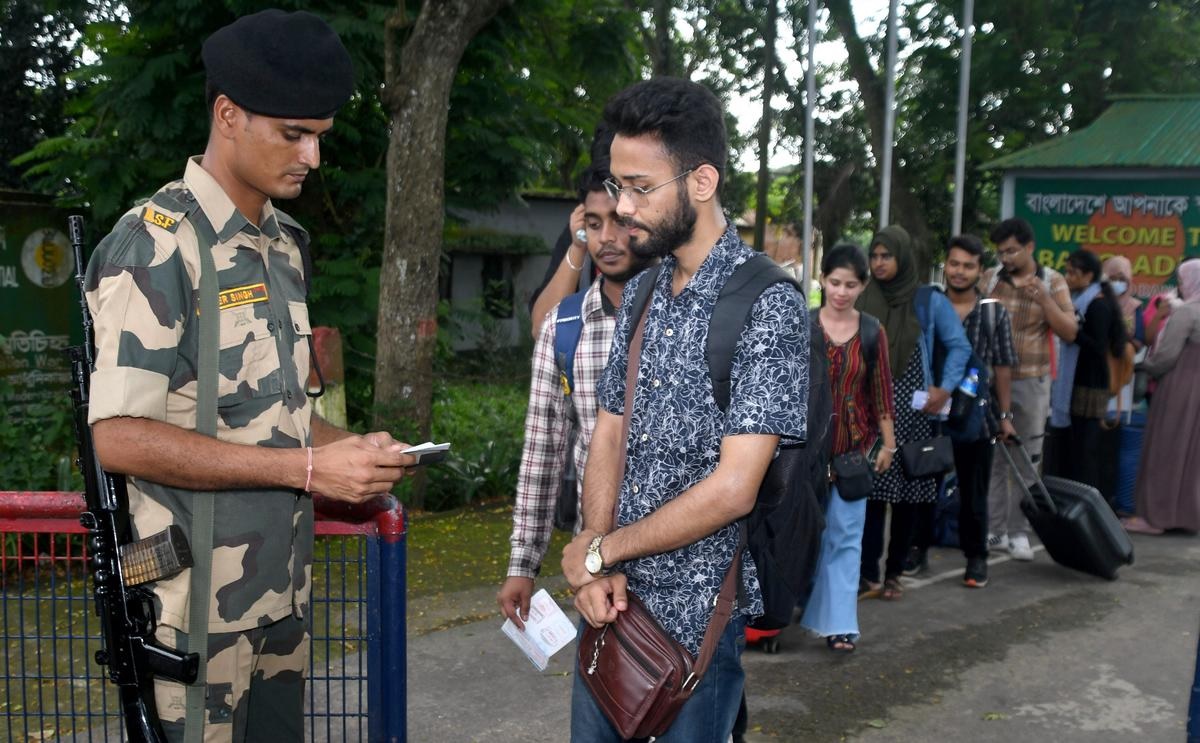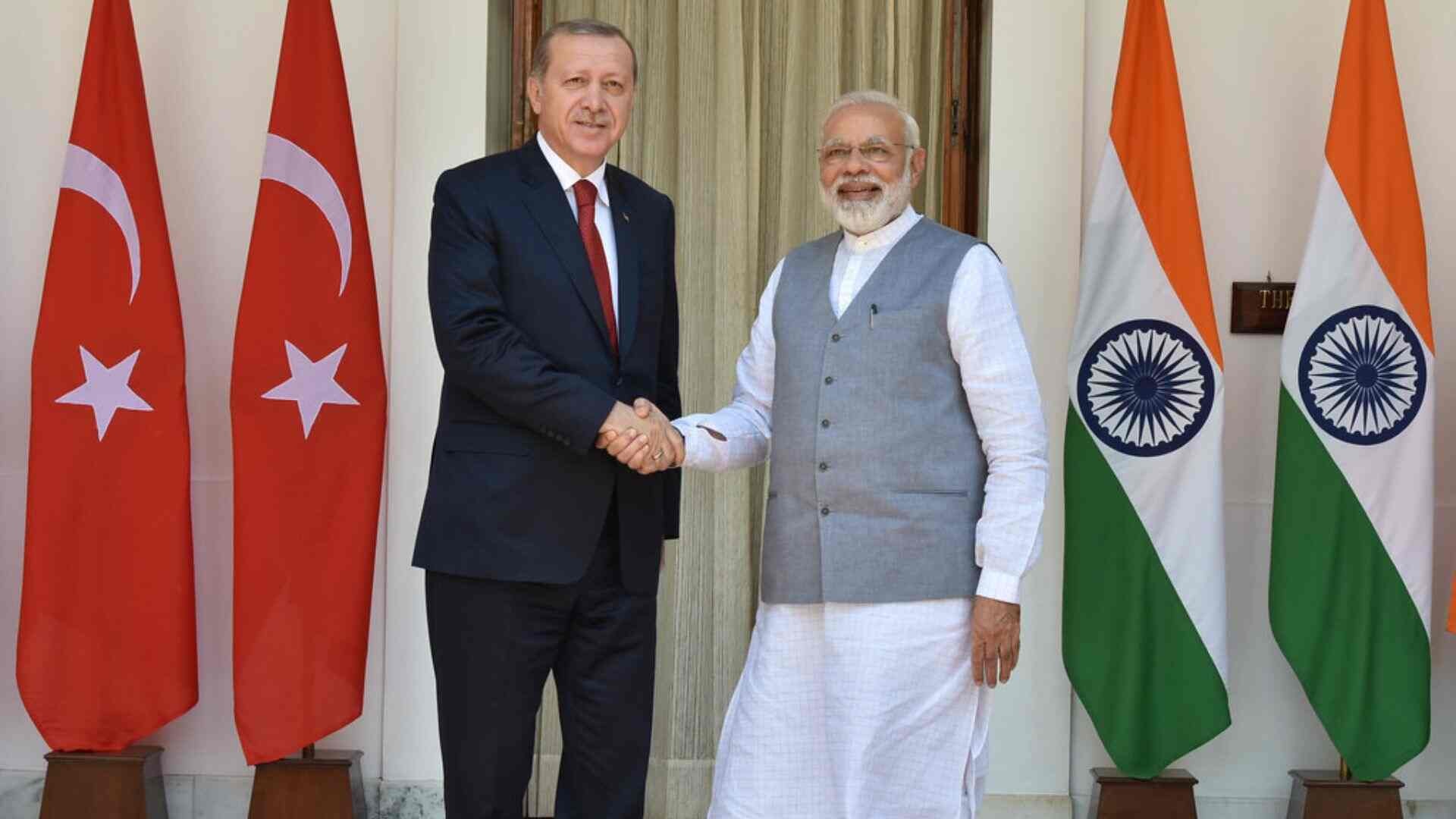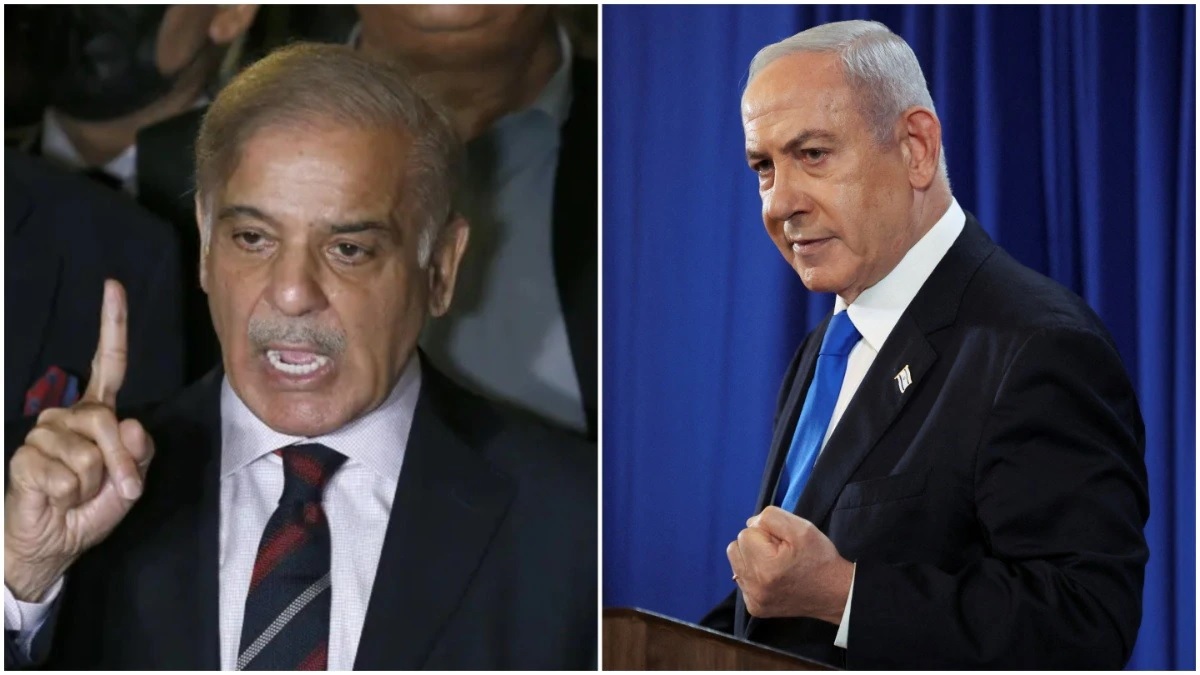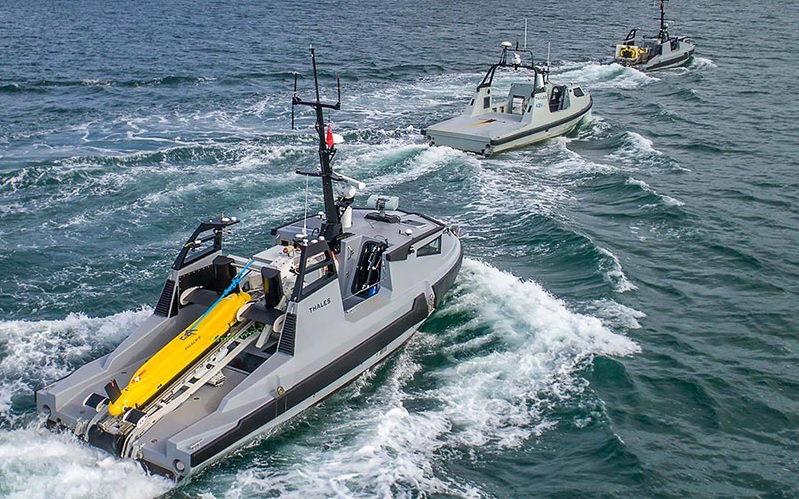India
India is on the brink of a major defense upgrade that could transform its fleet of Sukhoi-30MKI fighter jets into cutting-edge "Super" Sukhois. This ambitious plan, set to cost approximately ₹63,000 crore, aims to enhance the capabilities of 84 jets, propelling them into a new era of technological sophistication and combat readiness.The upgrade will infuse the Sukhois with advanced radars, avionics, and longer-range weaponry. While these jets will not achieve full fifth-generation fighter capabilities—lacking only in stealth—they will incorporate features close to this level, including manned-unmanned teaming capabilities. This means they will be able to operate alongside autonomous drones using artificial intelligence and data links, dramatically expanding their operational versatility.The Indian Air Force (IAF) sees this upgrade as crucial to maintaining its strength and addressing current shortfalls. With only 30 operational squadrons compared to the sanctioned 42, this overhaul comes at a critical time, given the ongoing security challenges from neighboring countries like China and Pakistan. Hindustan Aeronautics Limited (HAL) will lead the project, aiming to complete the upgrade of all 84 twin-engine Sukhois over the next 15 years. This process will involve a seven-year development and flight-testing phase before the upgraded jets are gradually introduced into service.Currently, the IAF's fleet includes 259 Sukhois, most of which were built under license from Russia at a cost of over $12 billion. An additional 12 jets are being procured to replace those lost in accidents. Looking ahead, India plans to introduce its own fifth-generation fighter, the Advanced Medium Combat Aircraft (AMCA), within 15 years, incorporating some of the latest technologies from the Sukhoi upgrade.The Sukhoi upgrade will feature the indigenous ‘Virupaksha’ advanced electronically scanned array (AESA) radars, which promise to enhance detection range significantly compared to the existing Russian systems. This upgrade will support the integration of new, longer-range weapons like the Astra-3 air-to-air missiles, capable of hitting targets up to 350 km away.In terms of electronics, the upgraded Sukhois will be equipped with Indian-made systems, including mission computers with advanced algorithms. The project will involve contributions from HAL, the Defense Research and Development Organization (DRDO), and private sector firms, ensuring a broad spectrum of local expertise.Moreover, 40 Sukhoi fighters are already capable of carrying the BrahMos supersonic cruise missiles, which have recently seen an increase in range from 290 km to 450 km, with future plans to extend this further to 800 km. This capability greatly enhances the IAF's precision strike potential.This significant investment in the Sukhoi fleet is part of India’s broader defense strategy, which includes a substantial budget allocation for modernizing the armed forces and boosting domestic production capabilities. With a vision to bolster defense exports and self-reliance, India is positioning itself as a prominent player in global defense manufacturing. The upgrade aligns with the nation's goal to develop and deploy advanced military technologies by 2030, ensuring robust defense capabilities amidst evolving regional threats.As India continues to invest in its defense infrastructure, the Sukhoi-30MKI overhaul not only strengthens current capabilities but also paves the way for future advancements, securing the nation’s defense posture well into the coming decades.
Read More → Posted on 2024-07-22 16:40:41World
GE Aerospace has recently concluded its study on the NATO Next Generation Rotorcraft Capability (NGRC) powerplant concept, a significant step towards revolutionizing the medium-lift helicopter sector. The study, awarded by the NATO Support and Procurement Agency (NSPA) in December 2023, aimed to explore various powerplant solutions for the future rotorcraft, encompassing advanced gas turbines, hybrid electric systems, hydrogen fuel cells, and hydrogen combustion engines.The comprehensive analysis conducted by GE Aerospace, in collaboration with its Defense & Systems organization and Avio Aero, evaluated multiple engine and airframe combinations to determine their suitability for NATO missions. The study assessed several factors, including unit costs, operational expenses, life cycle costs, speed, payload, and range, to ensure that the proposed solutions align with NATO’s strategic objectives.John Martin, GE Aerospace's Director of Turboshaft Advanced Programs, emphasized the significance of the study, stating, “Our study provides valuable insights into the capabilities of various power plant options, bringing us closer to realizing the future of NATO’s next-generation, multi-capable helicopter.”The NGRC project, initiated in 2020 by France, Germany, Greece, Italy, and the UK, aims to replace the existing fleet of medium-lift helicopters, which are expected to be phased out between 2035 and 2040. The new rotorcraft is anticipated to feature a weight range of 10 to 17 tons and possess the ability to integrate with unmanned platforms. It will be designed to carry its own weapons, cost no more than 35 million euros ($38.2 million), and have a cost-per-flight hour capped at 10,000 euros ($10,920). Additionally, the helicopter should have an availability rate exceeding 75 percent, an unrefueled flight range of up to 1,650 kilometers (1,025 miles), a cruise speed of 220 knots (253 miles/407 kilometers per hour), and a lifting capacity of over 4,000 kilograms (8,800 pounds), with space for up to 16 fully equipped troops.The study’s findings will guide the NGRC partner nations as they advance with the program, with three of the five NGRC concept studies open to industry involvement. Lockheed Martin has been awarded the contract for the open systems architecture study, while the integrated platform study contract is still pending. The remaining two studies are being conducted internally without industry participation.As the NGRC initiative progresses, GE Aerospace’s insights will play a crucial role in shaping the future of medium-lift rotorcraft, aiming to deliver a next-generation helicopter that meets the evolving needs of NATO’s operational requirements.
Read More → Posted on 2024-07-22 16:36:33India
In a significant move to bolster its aerial surveillance capabilities, the Indian Ministry of Defence (MOD) has issued a request for information (RFI) to acquire six Airborne Early Warning and Control Systems (AEW&CS) for the Indian Air Force (IAF). This initiative, announced on July 19, 2024, is aimed at enhancing the IAF’s ability to detect and track aerial threats over long distances, thereby strengthening national security.The RFI specifies that only Indian vendors and original equipment manufacturers (OEMs) are eligible to participate, reflecting the MOD's commitment to promoting domestic defense manufacturing under the "Make in India" initiative. The AEW&CS, often referred to as "eyes in the skies," are sophisticated systems that include radar, electronic surveillance measures, communication support, and command and control functionalities. These systems are crucial for maintaining situational awareness and providing early warning of potential threats.Key requirements outlined in the RFI include the need for jet-engine aircraft with a minimum endurance of eight hours and the capability for air-to-air refueling. The aircraft must operate at altitudes of 40,000 feet or higher and achieve cruise speeds above Mach 0.7. The radar system must offer 360-degree coverage and be capable of detecting and tracking a range of targets, from large aircraft to small unmanned aerial vehicles (UAVs), at distances exceeding 550 kilometers and altitudes from 100 feet to 65,000 feet.In addition to radar capabilities, the AEW&CS must include an identification friend or foe (IFF) system, a self-protection electronic warfare suite, data links, and a comprehensive mission suite for seamless integration with the IAF’s command and control network. These requirements ensure that the new systems will significantly enhance the IAF’s network-centric warfare capabilities.The IAF currently operates a limited fleet of three Russian-origin A-50 aircraft, based on the IL-76 airframe and equipped with Israeli avionics, and two indigenously developed Netra aircraft from the Defence Research and Development Organisation (DRDO). Despite the existing capabilities, the IAF has identified a need for a total of 12 AEW&CS to effectively monitor its extensive airspace, especially along its borders with China and Pakistan.China and Pakistan possess more extensive and advanced AEW&CS fleets compared to India. China operates around 20 Shaanxi KJ-500 aircraft, four Shaanxi KJ-200 aircraft, and four KJ-2000 aircraft. Pakistan’s fleet includes four Chinese ZDK-03 Karakoram Eagles and eight Swedish Saab 2000 Erieye platforms. The disparity in fleet sizes underscores the importance of expanding and modernizing India’s AEW&CS capabilities.The DRDO is actively working on an advanced AEW&CS program to develop a more sophisticated mission suite than the one currently deployed on the Netra aircraft. The Netra has already proven its operational value, having been deployed during the Balakot airstrike in 2019. The ongoing development efforts by DRDO are expected to result in cutting-edge systems that will further enhance the IAF’s operational effectiveness.This RFI marks a significant step forward in the MOD's efforts to modernize India's defense infrastructure and reduce reliance on foreign technology. By prioritizing indigenous solutions, the MOD aims to foster a robust defense manufacturing ecosystem in India, ultimately contributing to national security and economic growth.
Read More → Posted on 2024-07-22 16:31:46Space & Technology
The Indian Space Research Organisation (ISRO) is gearing up for an exciting milestone on July 22, 2024, with the test flight of a groundbreaking air-breathing propulsion system. This innovative technology, designed to enhance rocket efficiency and reduce launch costs, will be launched from the Satish Dhawan Space Centre in Sriharikota at approximately 7:30 AM IST. This test marks a significant step forward in ISRO's journey towards more efficient and cost-effective space missions.Air-breathing propulsion systems represent a significant departure from traditional rocket technology. Typically, rockets carry both fuel and an oxidizer, which together make up a substantial portion of the rocket's mass. In the case of India's largest rocket, the LVM-3, nearly 86% of its 640-ton lift-off mass is propellant, with the oxidizer alone accounting for 70% of the propellant's weight. However, in an air-breathing system, the rocket carries only the fuel, relying on atmospheric oxygen as the oxidizer. This results in a much lighter rocket, significantly improving efficiency and reducing costs.ISRO's upcoming test will be conducted using a modified version of the Rohini-560 experimental rocket, named the Advanced Technology Vehicle (ATV). This test follows ISRO's initial experimental flight of air-breathing propulsion technology on August 28, 2016, which successfully demonstrated the ignition of air-breathing engines at supersonic speeds, flame holding, air intake mechanisms, and fuel injection systems. The ATV, weighing 3,277 kg at lift-off during the maiden test, will again serve as the solid rocket booster carrying the scramjet test articles to supersonic speeds.The scramjet engine, a type of air-breathing propulsion, is at the heart of this test. Scramjets, or Supersonic Combustion Ramjets, operate at hypersonic speeds (Mach 5 and above) and rely on the vehicle's high velocity to compress incoming air. This compressed air is mixed with hydrogen fuel and ignited, producing thrust. Unlike traditional engines, scramjets have no rotating parts and maintain supersonic airflow throughout the combustion process, making them ideal for very high-speed flight.ISRO's scramjet engine, which uses hydrogen as fuel and atmospheric oxygen as the oxidizer, demonstrated its capabilities during the 2016 test with a hypersonic flight at Mach 6 for a duration of five seconds. The upcoming test aims to build on this success, moving towards an autonomous vehicle powered by a scramjet engine capable of accelerating for 250 seconds.In addition to scramjets, other types of air-breathing propulsion include ramjets and dual-mode ramjets (DMRJ). Ramjets operate efficiently at speeds between Mach 3 and Mach 5 but cannot start from a standstill and require a rocket to bring them to supersonic speeds. Dual-mode ramjets can transition between ramjet and scramjet modes, making them versatile for a wider range of speeds.India joins an elite group of countries pursuing air-breathing propulsion technology, which promises significant advancements in aerospace capabilities. These technologies are not only crucial for reducing the costs of space missions but also have strategic implications for developing advanced, high-speed aerospace vehicles.As ISRO prepares for this critical test, the successful demonstration of air-breathing hypersonic technology will pave the way for future innovations and strengthen India's position in the global space race.
Read More → Posted on 2024-07-22 16:29:13India
A sudden and devastating fire broke out on the Indian Navy's multirole frigate, INS Brahmaputra, while it was undergoing maintenance at the naval dockyard in Mumbai. The incident occurred on Sunday evening, sending shockwaves through the naval community. The blaze caused significant damage, and by Monday morning, the ship was found listing on its side. Rescue operations are currently underway to locate a missing junior sailor, while all other personnel have been accounted for.The INS Brahmaputra, the first of the indigenously built Brahmaputra-class guided missile frigates, was commissioned into the Indian Navy in April 2000. This formidable vessel, boasting a displacement of 5,300 tonnes, a length of 125 meters, and a beam of 14.4 meters, is a critical asset to India's naval capabilities. Equipped with a range of weapons including medium and close-range guns, surface-to-surface and surface-to-air missiles, and torpedo launchers, the ship is designed to excel in various facets of maritime warfare. Additionally, it can operate Seaking and Chetak helicopters, enhancing its operational reach.The fire started while the ship was undergoing a routine refit, a process essential for maintaining the vessel's operational readiness. The blaze was initially managed by the ship's crew with assistance from firefighters at the Naval Dockyard and other nearby ships. Despite their efforts, the fire caused the ship to start listing to one side. The navy's statement on Monday afternoon confirmed that the ship could not be brought back to an upright position and is now resting on its side at the berth.The exact cause of the fire remains unknown, and the Indian Navy has ordered an inquiry to investigate the incident. The search for the missing sailor continues, with rescue teams tirelessly combing through the damaged sections of the ship. This tragic event underscores the inherent risks faced by naval personnel even during routine maintenance activities.The INS Brahmaputra is manned by a crew of 40 officers and 330 sailors, who have all been trained to handle such emergencies. The immediate response and coordination between the ship's crew and external firefighting teams highlight the preparedness and resilience of the naval forces. However, the damage to the ship and the potential loss of a sailor cast a shadow over the navy's routine operations.This incident has raised concerns about the safety protocols in place during maintenance activities at naval dockyards. The ongoing investigation is expected to provide insights into the cause of the fire and suggest measures to prevent such occurrences in the future. As the Indian Navy mourns the loss of a valuable asset and potentially a brave sailor, the focus will also be on learning from this tragedy to enhance the safety and effectiveness of its fleet.
Read More → Posted on 2024-07-22 16:25:17World
In a bold move that has drawn international attention, a citizens’ tribunal known as the Court of the Citizens of the World has issued a symbolic arrest warrant for Chinese President Xi Jinping. This nonbinding verdict was announced on July 12, following four days of hearings in The Hague, Netherlands, where the court is based. The tribunal found Xi Jinping guilty of crimes of aggression against Taiwan, crimes against humanity in Tibet, and genocide against Uyghurs in Xinjiang.The Court of the Citizens of the World is a "people’s court" dedicated to upholding universal human rights. Its panel included notable figures such as Stephen Rapp, former U.S. ambassador-at-large for war crimes issues; Zak Yacoob, a retired judge from South Africa’s Constitutional Court; and Bhavani Fonseka, a constitutional lawyer and human rights activist from Sri Lanka. The hearings featured testimonies from expert witnesses and victims, who provided harrowing accounts of widespread human rights abuses.In Tibet and Xinjiang, witnesses described a grim reality of intrusive surveillance, repression, torture, and severe restrictions on free expression and movement. They detailed efforts by the Chinese government to obliterate the distinct cultural and religious identities of the Uyghur and Tibetan people. Survivors of mass detention camps in Xinjiang spoke of torture and the forced sterilization of Uyghur women.One of the survivors, Gulbahar Haitiwaji, now living in France, testified about her experiences in the internment camps. She recounted being chained to beds and tortured, and expressed her relief at finally having the opportunity to testify. "Back then, while in the camp, I often wondered if there was any justice in the world capable of punishing those responsible for our people's suffering," she told Radio Free Asia.Despite being an unofficial body with no legal authority, the tribunal's proceedings have highlighted the severe plight of the Uyghurs, Tibetans, and Taiwanese under Chinese rule. The court claimed it had "sufficient legal grounds" to issue an arrest warrant for Xi Jinping and called on the international community to support its decision. The verdict was reported by JURIST, a nonprofit news organization focusing on rule-of-law issues worldwide, which underscored the significance of the tribunal's findings.The Chinese government has yet to respond to the tribunal's verdict. However, it has been noted that Chinese authorities tried to dissuade Uyghur witnesses from testifying in The Hague. Abdurehim Gheni, a Uyghur activist based in the Netherlands, recounted how Chinese police contacted him through a banned communication app, urging him not to attend the hearing.Former Tibetan political prisoners also gave testimonies, including Dhondup Wangchen and Tenpa Dhargye, who described the torture they endured in Chinese jails. Tibetan filmmaker and human rights activist Jigme Gyatso, also known as Golog Jigme, highlighted the systematic torture and persecution of political prisoners in Tibet. He emphasized Xi Jinping's efforts to eradicate Tibetan language and culture.Abduweli Ayup, a Uyghur rights activist and researcher based in Norway, hailed the tribunal's verdict as a significant step in stopping the Uyghur genocide. He emphasized that the court's judgment implicated Xi Jinping directly and called for his arrest and punishment.This is not the first time a citizens’ tribunal has issued such a verdict. In December 2021, an independent Uyghur Tribunal in London also found China guilty of genocide against Uyghurs, attributing primary responsibility to Xi Jinping. While these panels lack state backing or the power to enforce sanctions, their conclusions add to the mounting evidence of Beijing’s human rights violations.The Court of the Citizens of the World has previously issued an indictment against Russian President Vladimir Putin for crimes of aggression in Ukraine. This case, along with the recent verdict against Xi Jinping, exemplifies the tribunal's commitment to addressing global human rights abuses, despite its limited legal authority.As the international community digests the tribunal's findings, the symbolic arrest warrant for Xi Jinping stands as a powerful statement against the ongoing human rights violations in China. Whether this will prompt any tangible action from world governments remains to be seen, but the tribunal has undeniably brought significant attention to the plight of the Uyghurs, Tibetans, and Taiwanese.
Read More → Posted on 2024-07-22 16:21:42India
Since the launch of the Agnipath scheme in June 2022, the Indian Army has enrolled a significant number of Agniveers. As of now, approximately 1 lakh Agniveers have been inducted, with around 70,000 already deployed to various units. This includes around 200 women, highlighting the inclusivity of the initiative. General Channira Bansi Ponnappa, the Adjutant General of the Indian Army, shared these updates, reflecting on the success and ongoing efforts of the scheme.The recruitment drive under the Agnipath scheme has been robust and well-organized. The first batch of Agniveers was recruited and enrolled between December 2022 and January 2023. These recruits have now been fully integrated into their units, performing duties alongside regular soldiers. They wear the same uniforms, undertake the same operations, and are held to the same standards. General Ponnappa emphasized their seamless assimilation into the Army, highlighting their contributions and the high performance they have demonstrated.Looking forward, the Indian Army has released 50,000 additional vacancies for the year 2024-25. The recruitment process for these positions is currently underway, ensuring a steady influx of new personnel to maintain the operational readiness and strength of the Army. This ongoing recruitment effort underscores the Army's commitment to maintaining a robust and capable force, ready to meet any challenges that arise.In a move aimed at empowering Ex-Agniveers, the Central Industrial Security Force (CISF) and Border Security Force (BSF) have announced special recruitment benefits for them. Neena Singh, the Director General of CISF, stated that the CISF has made all necessary arrangements to recruit Ex-Agniveers. Ten percent of constable posts have been reserved for them, along with relaxations in the Physical Efficiency Test. Additionally, there is an age relaxation of five years for the first batch and three years for subsequent batches.The recruitment of Ex-Agniveers is expected to benefit the CISF by providing a capable, dedicated, and disciplined workforce. This, in turn, will enhance the efficiency of CISF operations. Ex-Agniveers will also benefit by gaining opportunities to continue serving in a disciplined and structured environment, thereby contributing to national security.The Agnipath scheme and its successful implementation reflect a significant shift in the Indian Army's recruitment strategy, focusing on creating a younger, more dynamic force. With continued recruitment and integration efforts, the scheme is poised to strengthen the Indian Army's operational capabilities and provide valuable opportunities for young men and women across the country.
Read More → Posted on 2024-07-22 16:05:22World
In a groundbreaking move, Indra, a leading Spanish defense and technology company, has partnered with the innovative Spanish startup Idbotic to enhance the security of Europe’s Future Combat Air System (FCAS). This collaboration aims to develop cutting-edge hardware encryption solutions that will safeguard the integrity and security of the FCAS’s sensors and systems.The FCAS represents Europe’s vision for next-generation aerial warfare, featuring a sixth-generation fighter aircraft that will operate in tandem with remotely piloted aerial platforms. At the heart of this system lies the concept of a “combat cloud,” a sophisticated network that ensures seamless real-time data exchange between air, ground, and sea platforms. Indra, serving as the coordinator of the program in Spain, is at the forefront of this ambitious project.One of the most exciting aspects of this collaboration is the creation of a “non-clonable” identity for the FCAS sensors and systems. This unique identity will enable secure, real-time data exchange, ensuring that the information shared within the combat cloud remains unbreachable. This security measure is crucial for maintaining the operational integrity and effectiveness of the FCAS in high-stakes combat scenarios.The agreement between Indra and Idbotic includes three parallel projects aimed at providing robust security at multiple levels:1. Non-Clonable Physical Function: This project focuses on enhancing hardware security, ensuring that the physical components of the FCAS are protected against cloning and unauthorized replication.2. Distributed Registration Technology: This initiative aims to facilitate the rapid and secure distribution of private keys, which are essential for encrypted communications within the combat cloud.3. Fully Homomorphic Encryption: This advanced encryption technique integrates encryption and decryption processes that are resistant to post-quantum attacks, ensuring long-term security in the face of evolving technological threats.Cesar Goyache, President of Idbotic, expressed his enthusiasm for the collaboration, stating, “Our joining the NGWS (Next Generation Weapons System)/FCAS program allows us to make strides in our development of a dual technology that will find an enormous range of applications. We are proud to be collaborating with a great Spanish technology company such as Indra, which has opened its doors and facilitated our entry into what is undoubtedly one of the most exciting technology programs underway in Europe today.”The FCAS program is a testament to Europe’s commitment to maintaining technological superiority in aerial combat. By integrating advanced encryption technologies, the FCAS will not only enhance its situational awareness but also ensure that all platforms within the combat cloud can coordinate their actions as a unified force. This level of integration and security is unprecedented, setting a new standard for future combat systems.Indra and Idbotic’s collaboration marks a significant step forward in the development of the FCAS, showcasing Europe’s capability to innovate and lead in the realm of defense technology. As the program progresses, it promises to deliver a combat system that is not only highly effective but also exceptionally secure, ready to meet the challenges of modern warfare.
Read More → Posted on 2024-07-22 16:03:09India
In the bustling tech landscape of Bangalore, a pioneering defence technology startup, Zulu Defence, is making significant strides with its advanced air defence aerial systems. This innovative company is revolutionizing the battlefield with a blend of nano, tactical, cargo, and munition drones, equipped with counter-drone capabilities. Their systems provide comprehensive intelligence, surveillance, reconnaissance (ISR), precision strike, and countermeasure functionalities in highly contested environments.At the forefront of Zulu Defence's innovations is the DRAP (Hovering Munition System), India's first indigenous kamikaze tank killer drone. This groundbreaking asset is designed for precision strikes and is capable of autonomously detecting, tracking, and engaging targets with its 5kg warhead. The DRAP's versatility is further enhanced by its extended flight time and multiple fusing options, making it a formidable force against personnel, light vehicles, and structures.The DRAP system is equipped with advanced computer vision, precision navigation, and human-in-the-loop controls, enabling it to execute surgical strikes while minimizing collateral damage. The drones are designed to communicate and coordinate in real-time through mesh networking and swarming algorithms, ensuring mission success even amid dynamic and challenging conditions.For the Indian Armed Forces, the DRAP system is a game-changer, providing unmatched situational awareness, intelligence collection, and rapid precision strike capabilities. These attributes are crucial for maintaining a strategic edge in complex battlespaces, particularly along the borders with Pakistan and China. The drone's autonomous target detection and engagement features offer significant advantages in high-risk areas, enhancing border security operations with its precision and flexibility.Moreover, the DRAP's ability to coordinate with other drones boosts its effectiveness in large-scale operations. This integrated system delivers unparalleled situational awareness, facilitating real-time decision-making and rapid threat response. As Zulu Defence continues to push the boundaries of defence technology, their commitment to innovation positions them as leaders in the sector, promising further enhancements to the capabilities of the Indian Armed Forces.Zulu Defence's dedication to developing cutting-edge technologies underscores their role in shaping the future of modern warfare. With the DRAP and other advanced systems, they are poised to provide the Indian military with the tools needed to stay ahead in increasingly complex and contested environments.By embracing advanced drone technology and focusing on precision, Zulu Defence is setting new standards in the defence industry, ensuring that India remains at the forefront of military innovation.
Read More → Posted on 2024-07-22 16:00:53India
European aerospace giant Airbus is making a significant investment in India by setting up a final assembly line (FAL) for its popular H125 helicopters. This decision underscores Airbus's recognition of India's potential as a burgeoning market for helicopters. The company has shortlisted eight potential sites across the country for this facility, with the ground-breaking ceremony anticipated later this year.Airbus's Executive Vice President for Global Business, Olivier Michalon, highlighted the strategic importance of this move during a recent briefing at the company's headquarters in Marignane. He emphasized that India represents the market of the future for helicopters. Despite the current market being relatively small, Michalon sees vast potential for growth.The new FAL will be Airbus's fourth globally for the single-engine H125 and is expected to commence operations in 2026, with deliveries starting towards the end of that year. Initially, the facility will produce up to ten helicopters annually, with the capacity to increase production based on market demand. Michalon mentioned that while ten helicopters per year might seem modest, the production could ramp up to 20, 30, or even 50 units as demand increases.The H125 helicopter is a critical model for Airbus, particularly in India and the South Asia region, where it is the best-selling helicopter. Airbus projects a demand for 500 H125 helicopters in India and neighboring countries over the next 20 years. The company's Head of Helicopters in India and South Asia, Sunny Guglani, noted that Airbus aims to be prepared for this demand, starting with ten helicopters annually and scaling up as needed.Michalon also stressed the broader implications of this move. By establishing the FAL in India, Airbus aims to enhance its competitiveness in terms of lead time and delivery, addressing both the Indian market's growth and potential demand from neighboring nations. This strategic decision will have a significant impact on Airbus's global footprint, reinforcing its commitment to the Make in India initiative.The facility will handle the integration of major component assemblies, avionics, mission systems, electrical harnesses, hydraulic circuits, flight controls, dynamic components, fuel systems, and engines. Additionally, it will conduct testing, qualification, and delivery of the H125 helicopters to customers in India and the region.Airbus's decision to set up this assembly line is a testament to its confidence in the Indian market. Despite current regulatory restrictions, Michalon expressed optimism that regulations will ease, making the skies more open for helicopter operations. Airbus is positioning itself to be ready for this anticipated market liberalization, demonstrating its trust in India's potential.In addition to the H125 assembly line, Airbus is also establishing a FAL for the C295 aircraft in Vadodara, Gujarat. This move further solidifies Airbus's commitment to India as a key player in its global strategy.The H125 helicopter is renowned for its versatility, capable of carrying up to six people. It is used in various sectors in India, including tourism, pilgrimage, medical services, the energy sector, and by private entities. With around 100 Airbus helicopters already operating in India, primarily H125 and H130 models, the new assembly line is set to bolster Airbus's presence in the region significantly.As Airbus gears up for the ground-breaking ceremony, likely to occur in October or November this year, the aviation industry eagerly anticipates the positive impacts this development will bring to India's helicopter market and beyond.
Read More → Posted on 2024-07-22 15:59:05Secrets/Mystery
The late 1950s and 1960s were defined by the intense space race between the United States and the Soviet Union, a competition that was as much about technological prowess as it was about political dominance. President John F. Kennedy's bold proclamation to put a man on the moon amplified NASA's efforts, while the Soviet Union sought to showcase its own capabilities. Relations between these superpowers were strained, and both nations were eager to demonstrate their superiority.In September 1959, the Soviet Union made a significant leap by crashing their Luna 2 probe into the moon, marking the first human-made object to reach the lunar surface. This achievement was more than a scientific milestone; it was a powerful political statement, with the Soviet coat of arms symbolically planted on the moon. But the U.S. wasn't just watching from the sidelines. In a clandestine operation that seemed straight out of a spy novel, the CIA orchestrated a bold heist to gather intelligence on Soviet space technology.The story begins with a Soviet exhibition tour that included an actual Lunik 2, the type of spacecraft that had successfully reached the moon. The Soviets intended to flaunt their technological triumphs, but this display also provided a rare opportunity for U.S. intelligence. A CIA team managed to gain access to the Lunik exhibit for 24 hours, during which they meticulously disassembled the probe, photographed every component, and then reassembled it—all without leaving a trace.This covert operation was not just about the mechanics of taking apart and putting back together a spacecraft; it was a high-stakes gamble that required precision and nerves of steel. The team worked through the night, capturing detailed images of the internal layout, including fuel tanks and electrical systems. Every aspect of the Lunik was documented, giving U.S. scientists and engineers invaluable insights into Soviet space technology.Years later, the details of this operation were declassified and revealed in a sanitized CIA historical review. The review, written by CIA officer Sydney W. "Wes" Finer and published in the agency's 1967 edition of "Studies in Intelligence," painted a vivid picture of the mission. It was space historian Dwayne Day who first brought this mission to public attention in the mid-1990s, after discovering the declassified document at the National Archives.In 2020, John Greenewald, founder of the Black Vault, published a non-sanitized version of the document, shedding more light on the operation. This version detailed how factory markings and other identifiers were used to trace the origins and components of the Lunik. The intelligence gathered provided a clear picture of Soviet production methods and capabilities, highlighting the fifth Lunik stage and identifying key electrical component suppliers.The operation wasn't without its challenges and moments of humor. Reassembling the probe was like a high-stakes game of Humpty Dumpty, with team members struggling to fit the pieces back together in the cramped confines of the spacecraft. One document vividly describes the painstaking efforts to resecure the orb in its basket, a task that took nearly an hour and tested the patience and skills of the operatives.In the end, the mission was deemed a success, exemplifying the fine line between covert operations and overt intelligence collection. The CIA's "kidnapping" of the Lunik probe was a testament to their ingenuity and determination to outmaneuver the Soviet Union in the space race. It was a daring exploit that, for many years, remained one of the most extraordinary episodes of Cold War espionage.
Read More → Posted on 2024-07-21 15:27:31India
In a significant move to bolster national security, Indian authorities have intensified their vigilance following the arrest of six individuals in Chennai with alleged ties to Hizb ut-Tahrir, a banned Islamist organization. The crackdown in May unearthed a cache of literature and propaganda materials endorsing the group's radical ideology, signaling a potential expansion of this terror network within India.Hizb ut-Tahrir, which is outlawed in several Middle Eastern and Central Asian countries, is known for its advocacy of a global Islamic caliphate. Its activities have been associated with extremist violence and the radicalization of individuals across various regions. The Chennai arrests underscore the Indian government's growing concern over the infiltration and spread of such ideologies within its borders.This heightened alert comes at a time when neighboring Central Asian countries are also grappling with the menace of Hizb ut-Tahrir. Kyrgyzstan recently detained several members of the group, seizing weapons and radical literature. In a similar vein, Kazakhstan has arrested individuals suspected of propagating terrorist activities and extremist propaganda. These efforts reflect a broader regional clampdown on radical elements.Adding to the complexity of the situation, Kyrgyzstan has also reported the arrest of 15 suspected ISIS supporters, highlighting the escalating threat posed by the Islamic State in Afghanistan (Khorasan). This surge in extremist activities in Central Asia, a region traditionally known for its tolerance and pluralism, has prompted Indian security agencies to closely monitor developments and reassess their counter-terrorism strategies.India's response has been multifaceted. At the recent Shanghai Cooperation Organisation (SCO) Summit in Astana, New Delhi emphasized the importance of a robust stance against cross-border terrorism and radicalism. The country has forged strong counter-terrorism alliances with Central Asian nations, recognizing the need for collaborative efforts to combat the evolving threat landscape.Looking forward, India is poised to deepen its counter-terror cooperation with Central Asian states. This partnership aims to curb the spread of extremist ideologies that could jeopardize regional stability and, by extension, India's national security. The recent arrests in Chennai serve as a stark reminder of the persistent threat posed by radical groups like Hizb ut-Tahrir and the imperative for sustained vigilance and international collaboration in countering terrorism.
Read More → Posted on 2024-07-21 15:18:13India
In a significant move to bolster India's defence capabilities, Russia has proposed the joint production of its cutting-edge S-500 air defence system during Prime Minister Narendra Modi's recent visit to Russia. This proposal highlights the deepening military cooperation between the two nations, which already share a history of successful defence projects, most notably the BrahMos missile project.The S-500, Russia's latest advancement in air defence technology, is designed to intercept a variety of modern hypersonic weapons, making it a crucial asset in the global arms race. Its ability to counter hypersonic threats is seen as a game-changer in modern warfare. The system's capabilities have been rigorously tested, with Russia claiming successful interceptions of hypersonic missiles, underscoring its strategic importance.India's interest in enhancing its border security and defence arsenal is well-documented. The country has already procured the Russian S-400 air defence system, which serves as a backbone for its air defence strategy. The addition of the S-500 would further strengthen India's defensive posture, particularly against emerging threats in the region.However, the decision to proceed with the joint production of the S-500 is not without its challenges. Geopolitical considerations and the potential for sanctions loom large over such a deal. The international community, particularly the United States, has been wary of countries engaging in defence transactions with Russia, owing to existing sanctions. This makes India's decision a complex one, requiring careful navigation of international diplomatic waters.The S-500 system itself has had a tumultuous journey to production. Initially slated for production by 2014, it faced delays due to various factors, including international sanctions and labour shortages. Despite these setbacks, Russia has announced that it has begun mass production of the S-500, with the system expected to enter service soon.The proposal for joint production with India is reminiscent of the BrahMos missile project, which has been a resounding success and a testament to the robust defence partnership between India and Russia. The BrahMos project saw the development of a supersonic cruise missile that is now a key component of India's defence capabilities, highlighting the potential benefits of collaborative defence projects.In conclusion, Russia's offer to co-produce the S-500 air defence system with India underscores the system's importance in global defence and the ongoing arms race in hypersonic missile defence. India's response to this proposal will be closely watched, as it navigates the intricate balance of enhancing its defence capabilities while managing geopolitical implications and potential sanctions. The outcome of this proposal could have significant implications for the future of Indo-Russian defence cooperation and the strategic landscape of the region.
Read More → Posted on 2024-07-21 15:14:40World
In a significant diplomatic breakthrough, the Philippines and China have reached an agreement to prevent confrontations at the Second Thomas Shoal, a highly disputed area in the South China Sea. This deal, announced by two Philippine officials on Sunday, aims to reduce tensions that have escalated in recent months and mitigate the risk of a larger conflict potentially involving the United States.The agreement comes after a series of intense, closed-door negotiations between Philippine and Chinese diplomats in Manila. These discussions, complemented by an exchange of diplomatic notes, focused on creating a mutually acceptable framework to manage activities at the Second Thomas Shoal. This area, occupied by the Philippines but claimed by China, has been a flashpoint in the broader territorial disputes in the South China Sea.The significance of this agreement is underscored by recent incidents where Chinese coast guard vessels employed powerful water cannons and aggressive maneuvers to block supply ships from reaching the Filipino outpost at the shoal. These actions have not only strained bilateral relations but also raised alarms within the international community, particularly in the United States, which has mutual defense treaties with the Philippines.While the specifics of the agreement have not been publicly disclosed, the Philippine officials confirmed that the pact is designed to establish clear protocols and communication channels to avoid misunderstandings and unintended clashes at sea. The officials, speaking on the condition of anonymity, emphasized that the deal would soon be formally announced to the public.This development marks a critical step towards easing tensions in the region. The South China Sea is a strategic maritime area through which a significant portion of the world's trade passes. The contested waters are claimed by multiple countries, including China, the Philippines, Vietnam, Malaysia, Brunei, and Taiwan, leading to a complex web of territorial disputes.The Philippines has consistently sought to balance its relations with both China and the United States. While China is a major economic partner, the Philippines also relies on the security umbrella provided by its alliance with the U.S. The agreement with China reflects Manila's ongoing efforts to manage its maritime disputes through diplomatic channels, despite the challenges posed by China's assertive posture in the region.International observers have welcomed the news of the deal, viewing it as a positive step towards stability in the South China Sea. However, the situation remains delicate, and the implementation of the agreement will be closely monitored. Ensuring compliance and maintaining open lines of communication will be crucial to the success of this accord.As the Philippines and China prepare to announce the details of their agreement, the international community remains hopeful that this will pave the way for more constructive engagement and peaceful resolution of disputes in one of the world's most contested maritime regions.
Read More → Posted on 2024-07-21 15:11:34India
Following the recent violent protests in Bangladesh, the Border Security Force (BSF) has been placed on high alert. The situation in Bangladesh, triggered by anti-reservation agitation, has created significant security challenges for the border force, particularly along the 856 km border with Tripura.Tripura Frontier Inspector General (IG) of the BSF, Patel Piyush Purushottam Das, emphasized the gravity of the situation. The unrest has heightened concerns about the safety of Indian students studying in Bangladesh, with many enrolled in medical colleges in Comilla, Brahmanbaria, and Dhaka. The number of Indian students in Bangladesh is estimated to be around 8,000.In response to the crisis, the BSF has intensified its vigilance along the border. Senior BSF commanders are closely monitoring the situation, and additional forces have been deployed to ensure maximum security. The IG reassured that the BSF is fully committed to securing the borders and is prepared to handle any challenges that may arise due to the disturbances in the neighboring country.As of Saturday evening, 365 students from various Indian states have safely crossed into Tripura through four check posts, including the Integrated Check Posts (ICPs) in Agartala and Srimantapur. The BSF has made comprehensive arrangements at these check posts, providing refreshments, food packets, transportation, and medical assistance to ensure the safe arrival of the students. IG Das personally directed his officers to supervise the students' arrival to ensure a smooth process.The cooperation between the BSF and the Border Guard Bangladesh (BGB) has been instrumental in facilitating the safe passage of stranded students. The BGB, despite the challenging law and order situation, has assisted in transporting students to the Agartala border. This collaboration highlights the strong relationship and mutual support between the two border forces.The BSF anticipates more students crossing the border in the coming days and remains fully prepared to provide all necessary assistance. The security has been tightened to prevent any criminal elements from exploiting the current situation.Meanwhile, External Affairs Ministry spokesperson Randhir Jaiswal stated that around 15,000 Indian nationals, including 8,500 students, reside in Bangladesh. External Affairs Minister S. Jaishankar is actively monitoring the situation, and the Indian High Commission in Dhaka is providing regular updates.Bangladesh has announced a curfew and deployed military forces after police failed to control the escalating violence. The unrest began with student protests demanding reforms in the government job quota system, leading to widespread disturbances and a challenging situation for the authorities.The BSF's proactive measures and the collaborative efforts with the BGB underscore the commitment to ensuring the safety and security of Indian nationals and maintaining stability along the border during these turbulent times.
Read More → Posted on 2024-07-21 15:07:55India
The Ministry of Defense (MoD) has issued a stern directive to Hindustan Aeronautics Limited (HAL) to deliver 18 Tejas Mk1A and Trainer aircraft by March 2025. This urgent mandate underscores the mounting pressure on HAL to resolve the ongoing delays plaguing the Light Combat Aircraft (LCA) program.HAL, India's state-owned aerospace giant, has encountered significant production challenges, notably a shortage of engines from its key supplier, GE Aerospace. To address this, GE Aerospace has committed to supplying two engines per month starting in September, aiming to ease the supply chain bottleneck. HAL plans to utilize these engines for new aircraft production while tapping into its existing engine reserves to meet the MoD's deadline.Despite the hurdles, HAL has made some progress. Two single-seater Tejas Mk1A jets are ready for delivery, with four more nearing completion. Additionally, six Tejas Trainer aircraft are in various stages of production and close to being delivered to the Indian Air Force (IAF).The pressure on HAL is palpable. The company must now accelerate production and streamline its supply chain to meet the MoD's stringent demands. Failure to deliver the stipulated number of aircraft by the March 2025 deadline could have serious repercussions for HAL and India's defense readiness.The Tejas program is a critical component of India's defense modernization efforts. Ensuring its success is vital for national security, as the IAF urgently needs these domestically produced fighter jets to bolster its fleet. However, the program has been plagued by delays and cost overruns for several years. The first Tejas Mk1A only took its maiden flight in March of this year, highlighting the production challenges HAL faces.This latest directive from the MoD reflects the urgent need to address these issues and expedite the delivery of these crucial aircraft. The road ahead is fraught with challenges, and HAL must navigate numerous obstacles to fulfill its commitments and meet the growing demands of the IAF.As HAL works to meet this ambitious deadline, the broader implications for India's defense capabilities and aerospace industry are significant. Successfully delivering the Tejas Mk1A and Trainer aircraft on time will be a testament to HAL's ability to overcome adversity and deliver on its promises, ultimately strengthening India's defense infrastructure.
Read More → Posted on 2024-07-21 15:02:53India
In a significant boost to India's defense production capabilities, Madhya Pradesh is set to embark on manufacturing tanks for the Indian Army. Chief Minister Mohan Yadav made this announcement at the Regional Industry Conclave held at the Subhash Chandra Bose Cultural and Information Center in Jabalpur district.Previously known for its involvement in cannon manufacturing, Madhya Pradesh will now expand its defense production repertoire. An agreement worth Rs 600 crores was signed between Ashok Leyland and Armored Vehicle Corporation Limited during the conclave, marking a crucial step in this new direction. This partnership signifies a substantial investment in the defense sector, emphasizing the state's commitment to innovation and development.CM Yadav highlighted the strategic importance of this move, stating, "Till now cannon manufacturing work has been going on for the defense sector in Madhya Pradesh and now tanks will also be made for the army." This transition is expected to fortify India's defense infrastructure and enhance the state's industrial capabilities.The Regional Industry Conclave also saw the initiation of 67 industrial units, with CM Yadav laying the foundation stone for 29 units and performing the groundbreaking ceremony for 38 more. These projects, with an investment of Rs 1500 crores, are anticipated to create employment opportunities for approximately 4500 people. CM Yadav underscored the state’s vast mineral wealth, positioning Madhya Pradesh as the second richest state in the mineral sector after Odisha. The state's transparent auctioning processes have garnered national recognition, encouraging further investments. Additionally, diamond cutting operations are set to commence in Madhya Pradesh, adding another feather to its industrial cap.The Chief Minister also spoke about the state's diversified industrial priorities, including textiles, pharmaceuticals, tourism, and food processing. An ultra-modern skill development center in the textile sector is in the pipeline, aimed at providing employment opportunities, particularly for women. The pharmaceutical sector in Madhya Pradesh is robust, with 275 units operational and exports reaching over 160 countries. Pithampur alone houses 60 pharmaceutical units.In the food processing sector, Madhya Pradesh is making significant strides with the establishment of two new mega food parks and the operation of eight existing ones. Relief measures on water and electricity supply have been implemented to support these industries.The conclave attracted industrialists from five countries and various Indian states, showcasing Madhya Pradesh's investor-friendly policies and abundant opportunities.CM Yadav also highlighted the state's efforts in improving education and healthcare, noting the increase in medical colleges from five to twenty-five in recent years. The state’s rich forest area offers additional opportunities for economic development and employment.By focusing on these diverse sectors, Madhya Pradesh aims to create a balanced industrial ecosystem that promotes sustainable growth and development. The manufacturing of tanks for the army marks a significant milestone in this journey, reinforcing the state's pivotal role in India's defense and industrial landscape.
Read More → Posted on 2024-07-21 14:58:50India
The Indian Ministry of External Affairs (MEA) has firmly dismissed recent media reports suggesting that Turkey has imposed a ban on military exports to India. Describing the reports as "disinformation at best," the MEA redirected further inquiries to the Turkish Embassy, emphasizing the need for caution and verification of such claims.The rumors originated from Turkey, where it was claimed that a Turkish government official disclosed the alleged ban during a confidential parliamentary session. Speculations arose that this move was aimed at favoring Pakistan, thereby further straining the already tense diplomatic relations between Ankara and New Delhi.MEA spokesperson Randhir Jaiswal addressed the issue during a press conference, clarifying that the information was inaccurate. He urged the public and the media to refrain from accepting such claims without proper verification. The MEA's firm stance aims to prevent the spread of unverified information that could potentially exacerbate diplomatic tensions.While Turkey has not issued an official statement regarding the purported ban, reports indicate that an executive from a Turkish arms procurement agency mentioned in a closed-door meeting that no permits are being granted for arms exports to India. This decision was allegedly influenced by Turkey's political circumstances and its friendship with Pakistan.Relations between India and Turkey have been on a decline in recent years. Ankara's steadfast support for Pakistan on the Kashmir issue, coupled with India's growing ties with Greece and the Armenia-Azerbaijan conflict, has contributed to the growing strain. Despite the allegations, India appears largely unaffected. New Delhi has proactively terminated weapons shipments to Turkey and canceled a significant $2.5 billion naval deal with a Turkish defense company. This move aligns with India's broader strategy of reducing dependence on foreign defense imports, especially from nations considered unreliable, and promoting domestic production.A prime example of this strategy is Hindustan Shipyard Limited (HSL), which has decided to proceed independently with the design and construction of five Fleet Support Ships for the Indian Navy. This decision was made after excluding a Turkish firm from the project due to Turkey's stance on Kashmir. The first delivery of these ships is expected in mid-2027.The ongoing situation underscores the complexities of international relations and the necessity of verifying information from multiple sources before drawing conclusions. As the incident unfolds, it remains to be seen how it will impact the already fragile diplomatic ties between India and Turkey.
Read More → Posted on 2024-07-21 14:54:28World
In a fervent stance against Israeli actions in Gaza, Pakistan has labeled Israeli Prime Minister Benjamin Netanyahu a "terrorist" and announced intentions to ban products from companies backing Israel. The declaration came as part of an agreement with the religious political party Tehreek-e-Labbaik Pakistan (TLP) to end their sit-in near Islamabad, where thousands of Pakistanis rallied in solidarity with the Palestinian cause.Rana Sanaullah, adviser to Prime Minister Shehbaz Sharif on political and public affairs, emphatically condemned Netanyahu, stating, "Netanyahu is a terrorist and a perpetrator of war crimes." This strong rhetoric reflects the widespread anger and frustration in Pakistan over the ongoing conflict in Gaza. Sanaullah also revealed the formation of a committee tasked with identifying companies and products in Pakistan that may be indirectly or directly supporting Israel or the forces committing atrocities against Palestinians.The sit-in in Islamabad, which culminated on Friday, saw demonstrators demanding an immediate ceasefire in Gaza and the official designation of Netanyahu as a terrorist by the Pakistani government. The protestors' calls for action resonated deeply within the government, leading to the pledge of further aid to Palestinians and a broader boycott of Israeli-related products.Although Pakistan and Israel do not share direct trade ties, the boycott extends to Western brands perceived as supportive of Israel. "We will not only boycott Israel but all products related to it and companies that are directly or indirectly involved in this cruelty or are helping those forces," Sanaullah announced. This move aims to economically pressure companies associated with Israeli actions.The Pakistani government's response includes the commitment to send over 1,000 tons of relief supplies to Palestinians by the end of the month, as part of their support for the besieged population in Gaza. This humanitarian gesture has been praised by Hamas, which sees it as a significant step in the international effort to aid Palestinians.The protest, held at a critical interchange connecting Islamabad to Rawalpindi, significantly disrupted commuter traffic, highlighting the urgency and intensity of the demonstrators' demands. The agreement to end the sit-in included not only the condemnation of Netanyahu but also practical steps to support Palestinian education. Earlier this month, Pakistan announced scholarships for Palestinian medical students from Gaza to continue their education in Pakistan, further solidifying their commitment to the Palestinian cause.As tensions continue to rise in Gaza, Pakistan's stance and actions mark a notable instance of international political and economic protest against Israeli policies, reflecting the broader regional and global sentiments towards the conflict.
Read More → Posted on 2024-07-21 14:49:05World
The French Navy is on the cusp of a technological revolution in mine warfare with the introduction of the Système de Lutte Anti-Mines Futur (SLAMF). This cutting-edge unmanned mine warfare system is set to replace the aging fleet of Tripartite-class mine hunters, sonar towing vessels, and diver support vessels, ushering in a new era of naval defense capabilities.A Strategic EvolutionThe SLAMF program isn't just about modernization; it's a strategic initiative aimed at securing the deployment of the French Navy’s most critical units, including nuclear-powered ballistic missile submarines and the aircraft carrier. Additionally, it will protect access to French ports, support the deployment of naval action forces, and ensure safe evacuations by sea during crises. This versatile system can also operate effectively in contested environments, highlighting its importance in contemporary naval strategy.Franco-British CollaborationThe inception of SLAMF is a testament to international cooperation. This first phase of the program, also known as MMCM (Maritime Mine Counter Measures) in the UK, stems from the Lancaster House military agreement signed in 2010. In March 2015, a contract was finalized between Thales, OCCAR (Organisation for Joint Armament Cooperation), and the two nations for the design, development, and production of prototypes—one for each country. This collaboration underscores the commitment of both nations to enhancing their mine warfare capabilities.Cutting-Edge TechnologyEach SLAMF system comprises two unmanned surface vehicles (USVs) and two unmanned aerial vehicles (UAVs). One USV is equipped with a towed sonar, while the other carries a remotely operated vehicle (ROV). These components work in tandem to detect, classify, and locate mines. The ROV, specifically the Multi-Shot Mine Neutralization System (MUMMS) by Saab, identifies and neutralizes mines. Thales, in collaboration with its subcontractor Exail, produces the unmanned underwater vehicles (UUVs) equipped with advanced sonars.The E-POC AdvantageIn addition to SLAMF, Thales has developed the e-POC (Expeditionary MCM Solution) demonstrator, a highly transportable system designed for rapid deployment. This system will enable the French Navy to deploy underwater drones for mine countermeasures missions in diverse operational theaters. With its compact form—comparable to a large laptop with three screens—e-POC provides flexible mission management capabilities from outside the operational zone, ensuring the safety of naval personnel. The French Navy plans to utilize e-POC from rigid-hulled inflatable boats (RHIBs), enhancing its operational flexibility.Future OutlookBy 2030, the French Navy is set to receive eight SLAMF modules and six MCM motherships, known as “bâtiments de guerre des mines” (BGDM), along with five EOD divers support vessels, referred to as “bâtiments base plongeurs démineurs nouvelle generation” (BBPD NG). This fleet expansion will significantly bolster the Navy’s mine warfare capabilities, ensuring it remains at the forefront of naval defense technology.The SLAMF program represents a significant leap forward in naval mine warfare technology. Through international collaboration, advanced unmanned systems, and flexible deployment solutions like e-POC, the French Navy is enhancing its strategic capabilities and ensuring the safety and security of its maritime operations. As these systems come online, they will play a crucial role in protecting national interests and maintaining maritime superiority.The introduction of SLAMF and its associated technologies marks a new chapter in naval defense, promising enhanced efficiency, safety, and operational effectiveness in mine warfare.
Read More → Posted on 2024-07-21 14:43:12Search
Top Trending
-
 Agneepath Scheme replaced with Sainik Samman Scheme 2024, Defence Minister Rajnath Singh Relaunched Agniveer Scheme
Agneepath Scheme replaced with Sainik Samman Scheme 2024, Defence Minister Rajnath Singh Relaunched Agniveer Scheme
-
 Death in Dhaka: CIA Links Surface After Putin Shielded Modi During SCO Meet
Death in Dhaka: CIA Links Surface After Putin Shielded Modi During SCO Meet
-
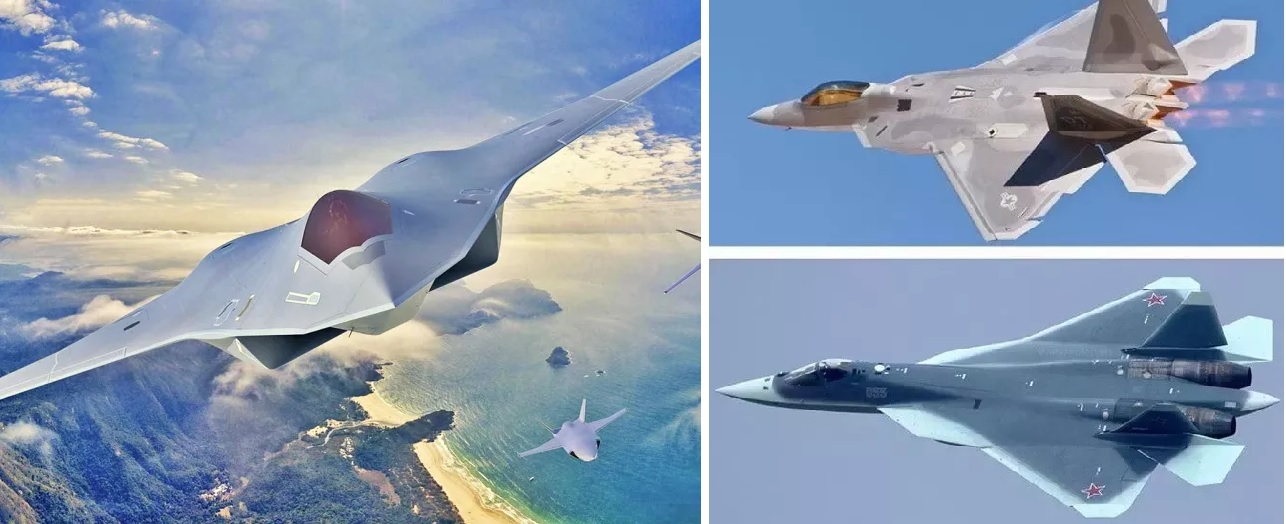 Key Differences Between 5th vs. 6th Generation Fighter Jets
Key Differences Between 5th vs. 6th Generation Fighter Jets
-
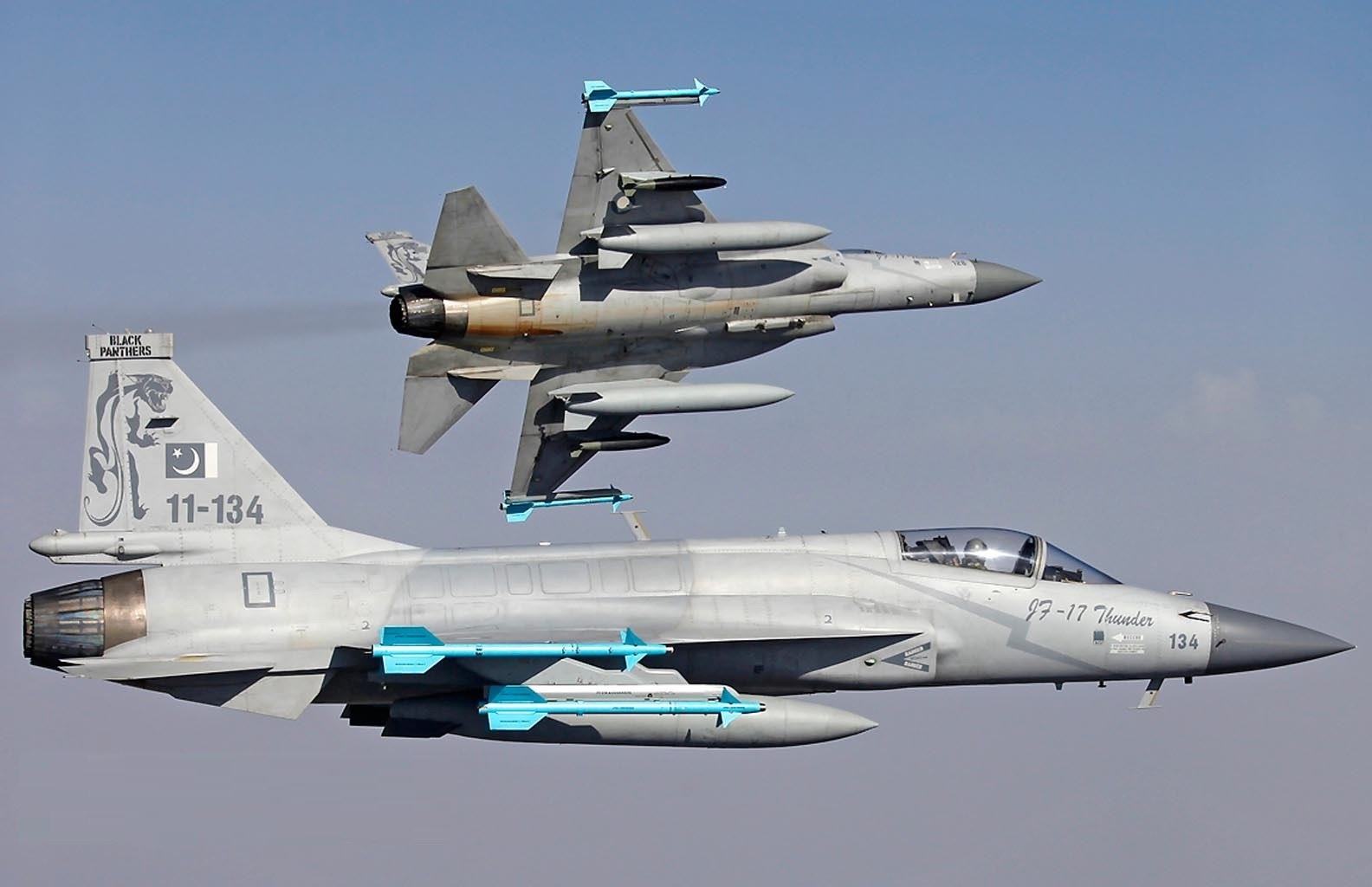 Pakistan Air Force to Unveil Stealth-Enhanced JF-17 Block 4 Fighter Jet by 2028
Pakistan Air Force to Unveil Stealth-Enhanced JF-17 Block 4 Fighter Jet by 2028
-
 Pakistan Announces 15% Increase in Defence Budget for 2024-25 Amid Economic Crisis
Pakistan Announces 15% Increase in Defence Budget for 2024-25 Amid Economic Crisis
-
 India’s AMCA Engine Decision: Safran vs. Rolls-Royce Final Expected by 2025
India’s AMCA Engine Decision: Safran vs. Rolls-Royce Final Expected by 2025
-
 India's TEDBF Program Takes Shape First Flight by 2028: Aiming for Naval Supremacy with Advanced Stealth and Technology
India's TEDBF Program Takes Shape First Flight by 2028: Aiming for Naval Supremacy with Advanced Stealth and Technology
-
 What Would Happen if the USA Left NATO? A Comprehensive Analysis
What Would Happen if the USA Left NATO? A Comprehensive Analysis
Top Trending in 4 Days
-
 China Unveils the World’s First Thorium-Powered Cargo Ship, Carry up to 14,000 Shipping Containers
China Unveils the World’s First Thorium-Powered Cargo Ship, Carry up to 14,000 Shipping Containers
-
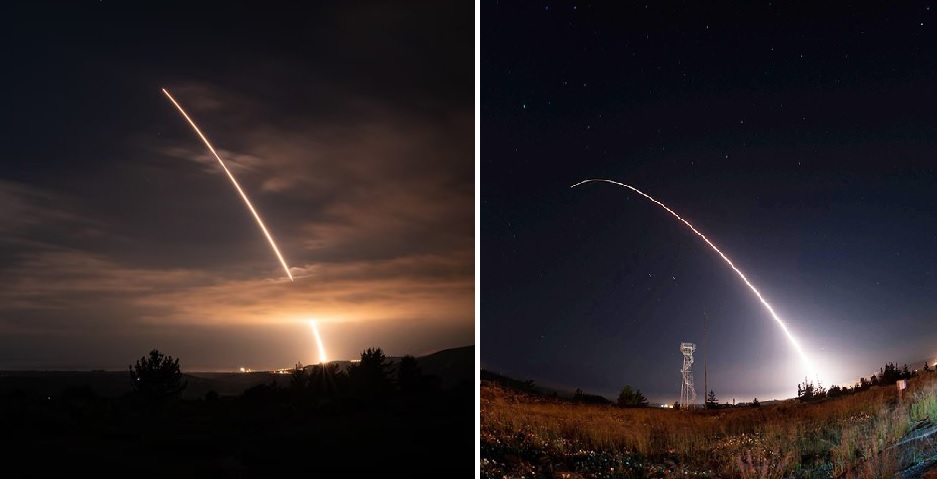 United States Successfully Conducts Unarmed Test Launch of Minuteman III ICBM from California
United States Successfully Conducts Unarmed Test Launch of Minuteman III ICBM from California
-
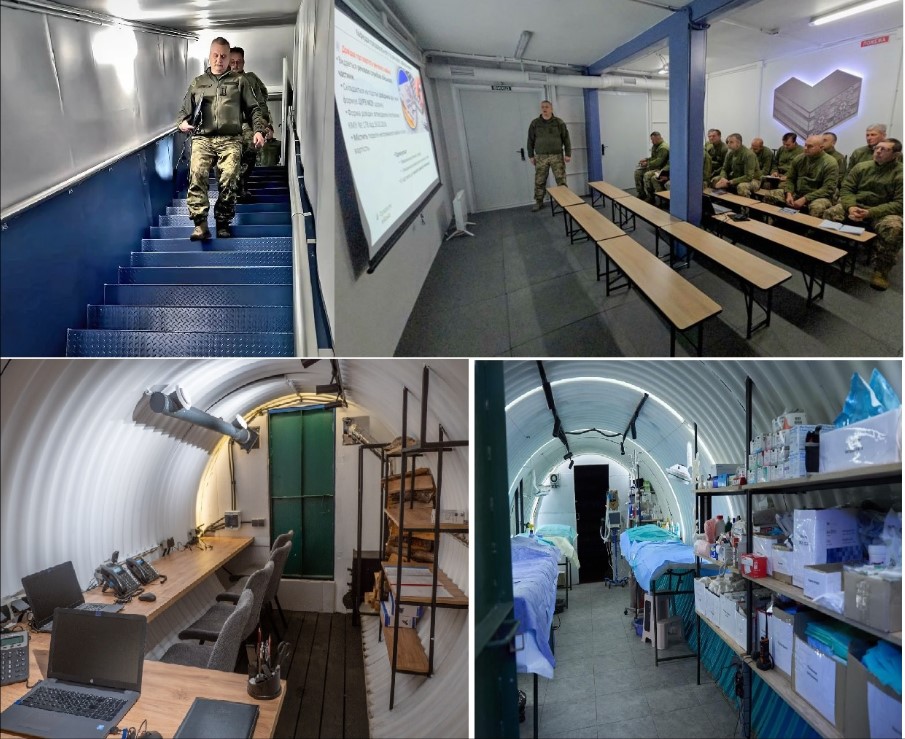 Ukraine Opens First Underground Military Training Hub Built with Metinvest’s Steel Dream Technology
Ukraine Opens First Underground Military Training Hub Built with Metinvest’s Steel Dream Technology
-
 NASA Confirms Anomalous Tail on Interstellar Object 3I/Atlas — Defying Known Comet Behavior
NASA Confirms Anomalous Tail on Interstellar Object 3I/Atlas — Defying Known Comet Behavior
-
 Blogger Claims Il-76 Cargo Plane Shot Down in Sudan Was Recently Purchased from Kyrgyzstan for $12 Million
Blogger Claims Il-76 Cargo Plane Shot Down in Sudan Was Recently Purchased from Kyrgyzstan for $12 Million
-
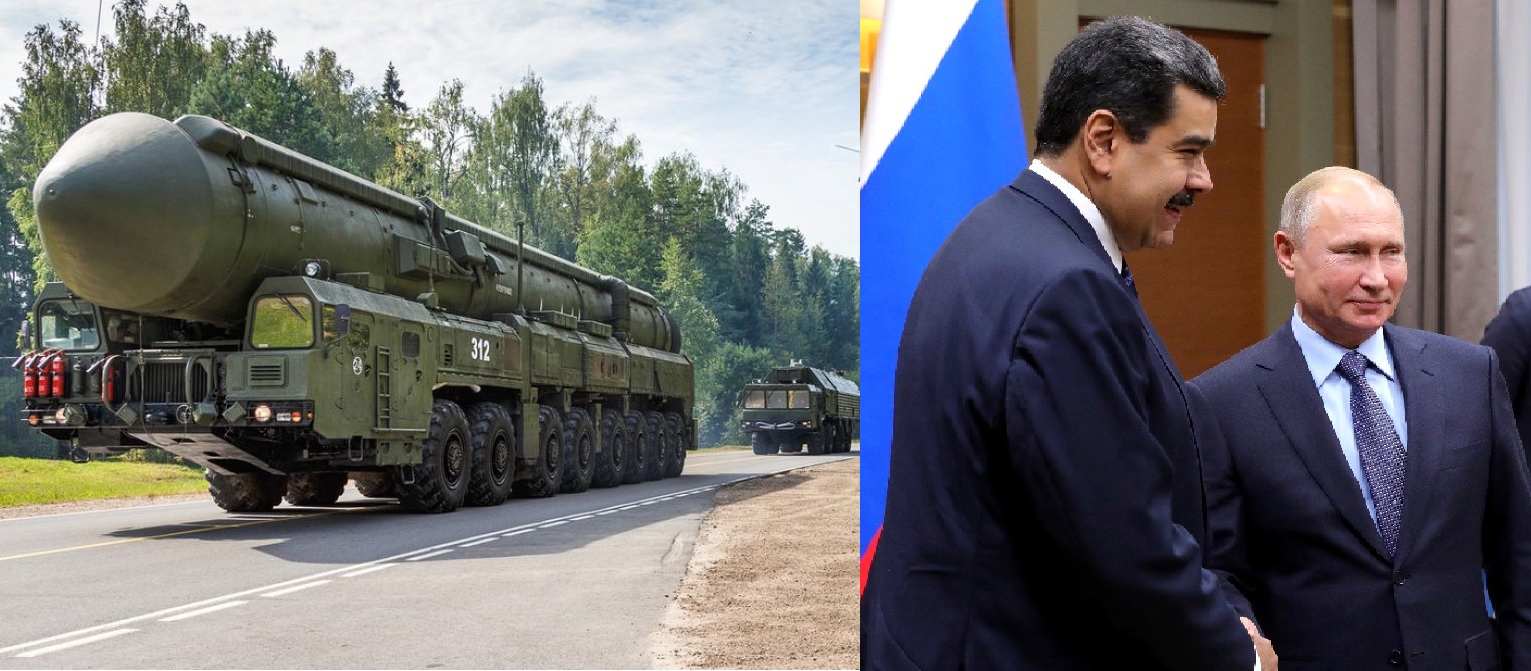 Russia Considers Supplying Venezuela with the “Oreshnik” Missile System — Why It Matters
Russia Considers Supplying Venezuela with the “Oreshnik” Missile System — Why It Matters
-
 China Begins Trial Production at the World’s First Flying Car Smart Factory in Guangzhou
China Begins Trial Production at the World’s First Flying Car Smart Factory in Guangzhou
-
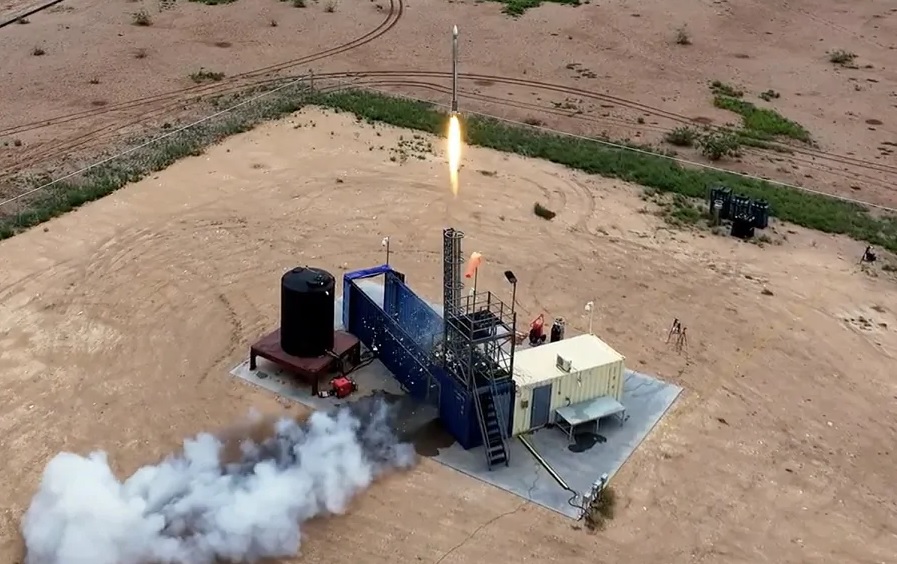 Hanwha Defense USA Invests in Firehawk Aerospace to Accelerate 3D-Printed Rocket Motor Production
Hanwha Defense USA Invests in Firehawk Aerospace to Accelerate 3D-Printed Rocket Motor Production










